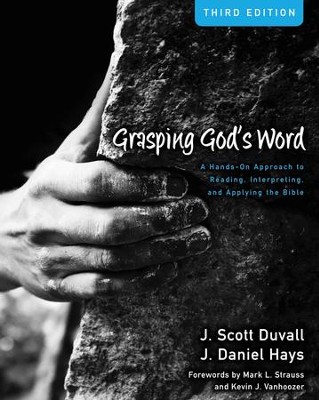So what does it look like to search the Scriptures? And why would we do that? How does it work to get at valid meaning to accept its truths and let it reach our hearts, our minds, and our souls? As we get closer to Him by our understanding, we enjoy His presence, and our worship takes on new significance. Read on for the specifics about how to search the Scriptures and see what precious, and infinitely valuable words are available to us.
Finding Theological Meaning In Scripture
It is crucial to understand the relationship between general, universal theological truths, and context-specific theological truths. Because to know and love God at a deeper and more meaningful level, it is necessary to understand Him, His nature, and the way reality is in terms of how it is created, formed, or shaped.
The following thoughts are from quite a bit of time spent within the Grasping God’s Word text (pgs 195-201).
To elaborate, context-specific theological truths are subordinate to general, universal theological truths. Both general and universal truths about God, His character, and His actions become borne out of an overall theological principle and truth. Such as, God is holy. Or God is love. Or God is omnipotent, omnipresent, and omniscient. These are examples of general, universal theological truths, among many others.
See the illustration here for the circled numbers, which correspond to the numbered outline here.
Step 1: Grasp the text in their town. What did the text mean to the original audience?
Step 2: Measure the width of the river to cross. What are the differences between the biblical audience and us?
Step 3: Cross the principlizing bridge. What is the theological principle in this text?
Step 4: Consult the biblical map. How does this theological principle fit with the rest of the Bible?
Step 5: Grasp the text in our town. How should individual Christians today live out the theological principles?
Migrating Meaning from One Era to Another
As we read and interpret the Bible, we seek to understand it as God’s word and apply it. To allow it to conform our hearts to Him. To allow it to steer our hearts toward Him in a new or more rooted love. As we understand what authors intended as written, we can understand the meaning of Scripture both generally and specifically. Scripture conveyed through text delivers meaning, but God derives or originates the meaning through the authors who wrote the Bible. As God chose to communicate to people across time, He did so through human authors.
Context-specific expressions of theological truths are often different among people as they relate to God and a general, universal theological truth about Him through Scripture. Depending upon the situation, people will experience a general theological truth about God in a context-specific way. As people gather context-specific truths from the Bible, they come to know more about the essential character of God as He is revealed when learning more about Him.
Making Sense of Theological Truth & Meaning
When reaching for context-specific theological truths in Scripture, we look for differences as described in Step 2 of the Interpretive Journey. The differences between the biblical, historical, cultural, and time-bound settings between the people and events to our circumstances, and settings. Then as we reach for general theological truths, we look for similarities in Step 2 of the Interpretive Journey. It is within these similarities of context-specific theological truths that we begin to find general and universal truths about God, what He requires, what He is like, what He has done and what He is doing. Theological truths as revealed about God in Scripture.
When in full consideration of the differences and similarities in Step 2 (the biblical context and our living context), we are prepared to recognize valid theological principles available to us as intended by God, the divine author of Scripture. Therefore, it holds that we move away from context-specific theological truths to general, universal truths that correspond to the rest of the Scripture without contradiction.
Purpose & Implication
To help with moving from context-specific theological meaning in Step 1 of the Interpretive Journey to general theological meaning, we must identify the purpose of the truth in Step 1. To ask what was the purpose of what the text meant to the original audience in Scripture. For example, what was the purpose of animal sacrifices in the Old Testament? What fitting theological principle could we draw from that? — What the LORD required was a blood atonement to cover for the sins of His people as necessary to become reconciled to Him. So reconciliation was the purpose of animal sacrifices among various types. Sacrificial offerings were among gift offerings and others, but the purpose holds true for atonement and reconciliation.
Once the purpose is understood, were then able to move from the context-specific meaning to the general meaning. In this case, the LORD requires a sacrificial sin atonement to become reconciled to Him. To cover our sin and return us to right standing before Him so that we could enjoy His presence and return to fellowship with Him. Understanding the purpose of context-specific theological meaning leads us to more general meaning.
So as this meaning often leads to characteristics of God (God is holy; God is love; God is all-powerful; etc.), some implications follow. It is in these implications that we act by faith to apply the theological principles as given in Scripture. We are free to take valid Old and New Testament theological principles and apply them to us as New Testament believers. To live out the LORD’s will for our lives to serve Him, honor Him, and love Him.














